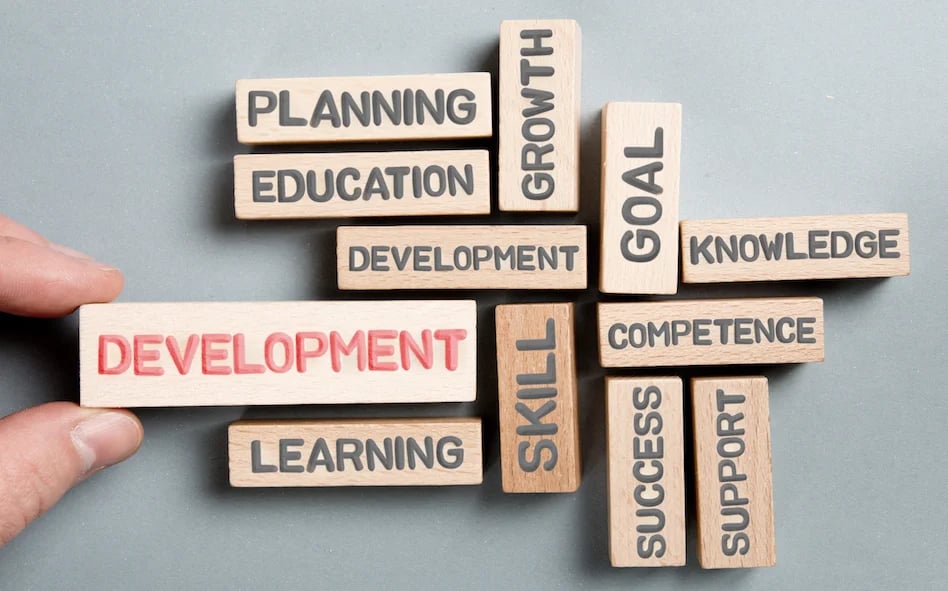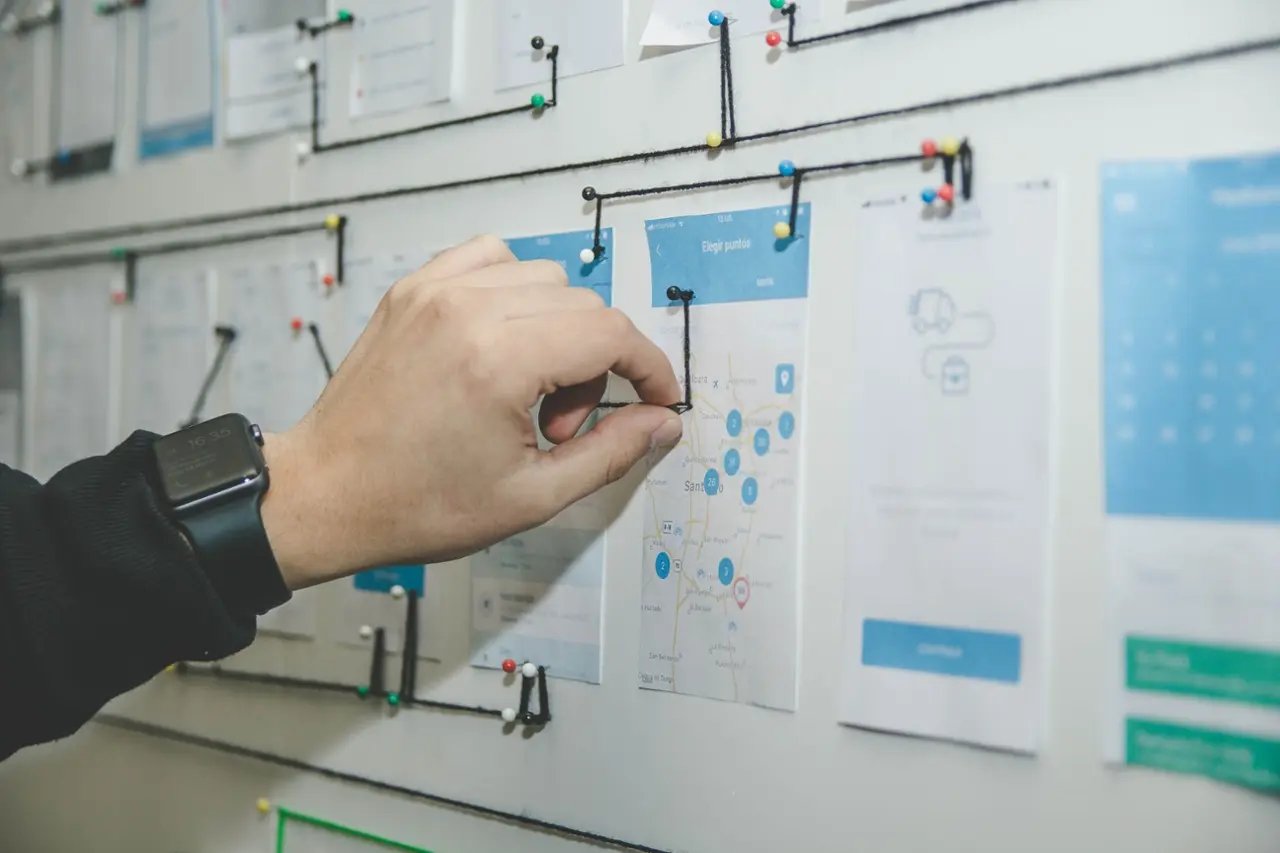10 Minutes of reading
How to build a skills development plan?

A skills development plan is a must-have for any business looking to help its employees maximise their potential. After all, the success of any organisation is predicated on the abilities of its staff. By helping them to grow, you’re also investing in the future of your company.
However, it may not always be obvious how best to go about developing employees’ skills. Fortunately, this guide will go through every step of the process, from defining what a skill development plan is, listing its benefits, and showing you how to create your own.
What exactly is a skills development plan ?
Before we go any further, we need to understand the purpose of a skills development plan, as well as what it includes.
A skills development plan can either be completed by an individual, or by an employee together with their manager. When an individual puts together their own plan, it may be known as a personal development plan, while one created within a business is often called an employee development plan. Here, we’ll be focusing on skill development plans for employees.
The purpose of a skills development plan is to help employees achieve certain goals. While these will be aligned with the aims and future objectives of the business, the plan will be primarily shaped around the individual’s professional ambitions. They help to focus the employee’s mind on what they want to accomplish in the short and long term, and enable them to map out the actions they need to take in order to hit their targets.
For example, an employee’s short-term goals may be to gain more experience in different aspects of their role with a view to achieving a long-term goal of moving into a managerial role. A skills development plan could recommend a variety of employee development methods, from shadowing other staff members to completing courses.
An employee’s skills development plan is not, however, permanently set in stone. Instead, it should be thought of as an evolving document that adapts as their needs and wants grow and change over time. Additionally, the employee isn’t the only person who must take action—it’s also up to any relevant managers to ensure that support and resources are made available so that any objectives laid out in the plan can be achieved.
Benefits of a skills development plan
The advantages of developing employees’ competences extend both to the team members themselves and to the entire company. If you’ve never put together a skill development plan before, though, you may not realise how many specific benefits they can bring.
See also Skills vs competencies: what is the difference?
Firstly, by creating a plan, you’re providing the employee with a clear understanding of what’s expected of them in the weeks and months ahead. Likewise, they can expect a level of support from management to help them meet their targets. Moving forward, both sides can then use the plan as a way of figuring out whether adequate progress is being made. If one party is falling behind, then appropriate actions can be planned and taken to help improve employee development.
By implementing the recommendations set out in the skills development plan, businesses can help to increase employee performance. Not only will this help them to excel in their current role, but it also prepares them to move upward within the company, reducing the costs associated with recruiting and training external candidates. Similarly, it makes the individual more employable over the long term.
Businesses can benefit in many additional ways. Firstly, by investing in employee growth, they can help to foster positive sentiment towards the company, building loyalty and increasing motivation levels. What’s more, by putting the work in to upskill employees now, organisations can future-proof themselves by ensuring their staff have the necessary skill set required to tackle any future challenges.
How to create a skills development plan
Now that we’ve established the reasons why skills development plans work so well, you’ll surely want to know what goes into creating one. We’ll break down the steps you need to take in order to create a truly effective plan that works for both your business and your employees.
Step 1: Define your goals
It’s impossible to plan out employee skill development without knowing what your aims are. For example, it’s no use advising one of your web developers to learn Python, only to realise further down the line that they actually need an entirely different programming language in order to do their job.
To start off with, then, you need to have a defined set of goals in mind. This part is very much a two-way street. First off, think from the point of view of your business. What are your aims in the short, medium and long term? These could be as diverse as launching a new product line, becoming a market leader in your sector or expanding internationally.
The next step is to have a discussion with each employee regarding their own personal aims. This can include a whole range of professional development goals, from earning certification in a certain field through to improving soft skills. More long-term ambitions may include promotion to a specific role within the business.
Step 2: Assess existing strengths and weaknesses
Now that each side knows what they’re aiming for, you can begin working together to figure out how to make it happen. However, this can only be a success if you know where you’re starting from. This means assessing the skills you currently possess and recognising what needs to be worked on.
One way to achieve this is to complete a SWOT analysis, which takes into account areas of existing strength, weaknesses you can work to reduce, opportunities to seize and potential threats to be aware of.
This exercise can help both managers and employees alike to become aware of gaps in their knowledge they may not have previously considered, and will identify areas that need to be addressed in order for both sides to achieve their objectives.
Step 3: Create a plan of action
At this stage, you’re now ready to turn your ideas into a workable plan. Rather than focusing on more general concepts, your aim is to create specific actions to be completed. For example, if an employee wants to improve their public speaking skills, the plan might give them a goal of presenting a project in front of their team.

Any items forming part of the plan of action need to be SMART. This is a useful acronym you can use to make the process of setting goals more effective. It stands for…
- Specific: What exactly do you want to accomplish and why? How can you go about this?
- Measurable: What criteria can you use to measure your progress?
- Achievable: Can you realistically attain this goal?
- Relevant: Does the action help in the pursuit of your overall ambitions?
- Timely: When do you need to complete the action? Is it a short, medium or long term goal?
An employee’s completed plan will detail their professional goals, include their SWOT analysis, and list a number of SMART actionable items that can help them to reach their targets. Once again, though, it’s important to remember that this plan is not simply about what the employee needs to do. It also provides management with an idea of how they can make any goals set achievable.
Step 4: Implement the plan
Your skills development plan is ready to go! Now, it’s time to think about how employees and managers alike can play their part in making it a reality.
Firstly, it’s important to remember that the majority of skill development should take place on the job. The 70:20:10 rule can help here—roughly 70% of learning happens through work, 20% from other people, and 10% via training. That’s why it’s so crucial to build in time into the working day to gain new skills, including activities such as mentoring or shadowing.
As for the training side of things, there’s no shortage of available tools that can help. One example of a success story is the Decathlon Academy, a solution that arose from a partnership between Rise Up and international sports retailer Decathlon. Here, employees each had their own personal training account and were given the power to determine their own goals, both inside and outside of work.
Step 5: Development over time
Your skills development plan is in full flow and your employee training course is going swimmingly. Now isn’t the time to rest on your laurels, though. It’s important to remember that the initial set of professional goals, business needs and required skills will evolve over time.
A successful plan will give both employees and managers the ability to make alterations as things change over time. For example, if an employee is falling behind, they may require additional support to help them reach their goal. Alternatively, if they’re exceeding their targets, more ambitious actions may be appropriate. By allowing both sides to reflect on the successes and failures of the plan, you can help to optimise it over the long run.

How to improve your employees' skills development
Any business that wants to thrive needs to take steps to help employees continually develop their skills. This means investing time and resources into ensuring that everyone has access to the most effective training resources for their needs.
This is where a learning management system (LMS) can prove incredibly useful. Using this software, you can easily keep track of employee progression and schedule in additional development activities to help your staff achieve their goals.
Similarly, using a learning experience platform (LXP) is a fantastic way to improve employee development, as it provides staff with a whole range of tools to boost engagement and motivation, such as social learning and gamification. The best solution of all, of course, is to choose a portal like Rise Up that combines LMS and LXP features, giving you the best of both worlds!



